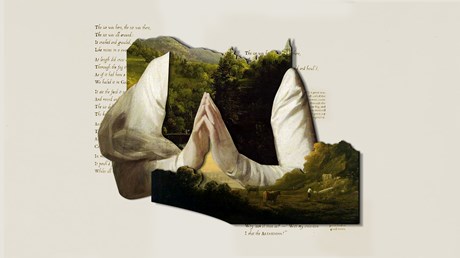Christopher Stokes on how the Romantic poets propelled a new view of personal devotion.

The language of prayer and the language of poetry share strong similarities. Prayer, like poetry, allows for, and even invites, the interplay between truth and beauty. A new book explores this connection between rational thought and aesthetic expression. Romantic Prayer: Reinventing the Poetics of Devotion, 1773–1832(Oxford University Press, 2021), by Christopher Stokes, senior lecturer in Romantic literature with the University of Exeter, is a scholarly examination of several key poets of the British Romantic period, from pre-Romantic William Cowper to second-generation Romantics Percy Shelley and Lord Byron and a range of poets in between.
The poets examined in this book reflect shifts in forms of religious devotion. Stokes argues that the theology of prayer reflected in this age and its poets parallels the growing importance of individual practices in religious life, when devotion became as much about doing as believing. Poetry, likewise, was increasingly becoming a personal practice, not merely an objective art.
Living in a time of ongoing and culminating secularization, these poets illustrate the ways Christianity helped birth secularity, as debates about the modes of Christianity evolved into debates about Christianity itself. Even so, as Stokes shows, poetry can be a way to preserve and practice religious faith amid growing skepticism.
You call prayer “an organ of faith” because of the way it “imprints” an understanding of God in the one who prays. Poetry, too, is a language that forms or imprints itself on us. The foundation of your analysis is that the language of prayer and the language of poetry are deeply connected. How are they connected?
There’s certainly a deep historical connection ...
from Christianity Today Magazine
via


.gif)

.gif)
.gif)
